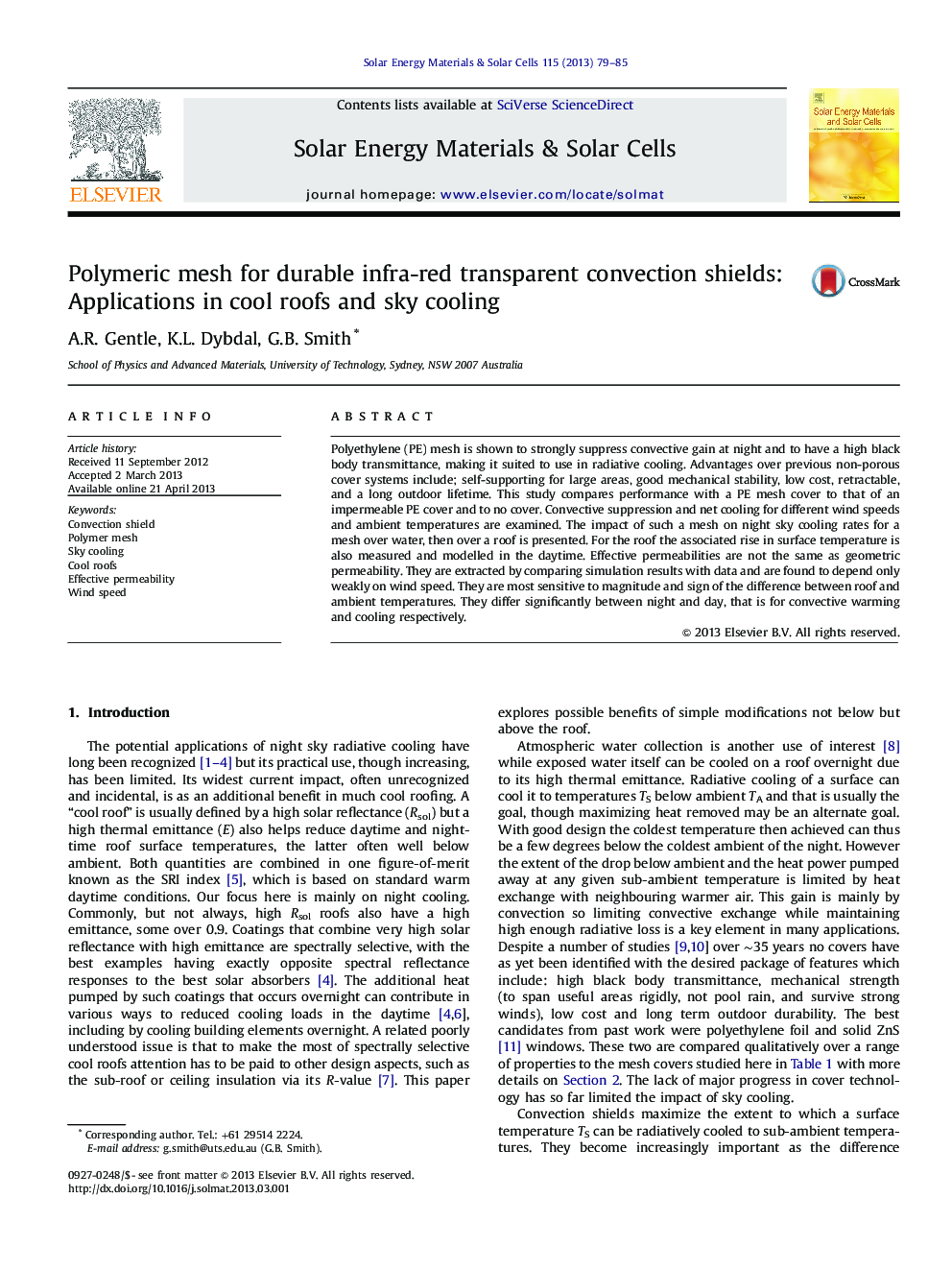| Article ID | Journal | Published Year | Pages | File Type |
|---|---|---|---|---|
| 78235 | Solar Energy Materials and Solar Cells | 2013 | 7 Pages |
•Polyethylene mesh suppresses convection gain at night when radiative cooling surprisingly well.•PE mesh covers solve a long term problem in radiative cooling.•Mesh covers are mechanically strong, cover large areas, and last outdoors for many years.•A novel method for determining mesh black body emittance and transmittance is described.•Effective permeabilities for convective exchange are much lower than the open area fraction.
Polyethylene (PE) mesh is shown to strongly suppress convective gain at night and to have a high black body transmittance, making it suited to use in radiative cooling. Advantages over previous non-porous cover systems include; self-supporting for large areas, good mechanical stability, low cost, retractable, and a long outdoor lifetime. This study compares performance with a PE mesh cover to that of an impermeable PE cover and to no cover. Convective suppression and net cooling for different wind speeds and ambient temperatures are examined. The impact of such a mesh on night sky cooling rates for a mesh over water, then over a roof is presented. For the roof the associated rise in surface temperature is also measured and modelled in the daytime. Effective permeabilities are not the same as geometric permeability. They are extracted by comparing simulation results with data and are found to depend only weakly on wind speed. They are most sensitive to magnitude and sign of the difference between roof and ambient temperatures. They differ significantly between night and day, that is for convective warming and cooling respectively.
